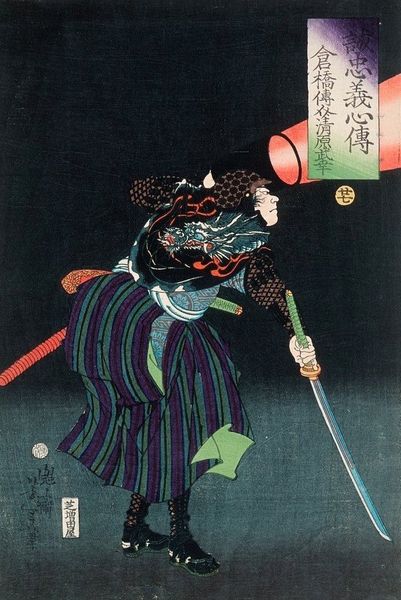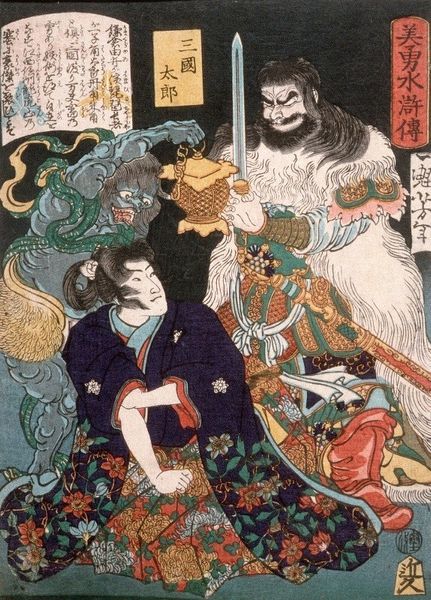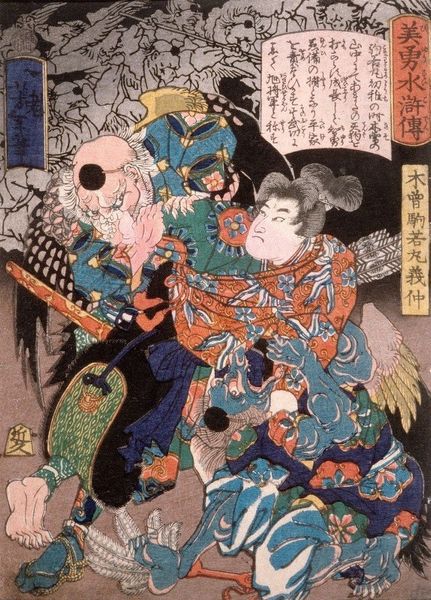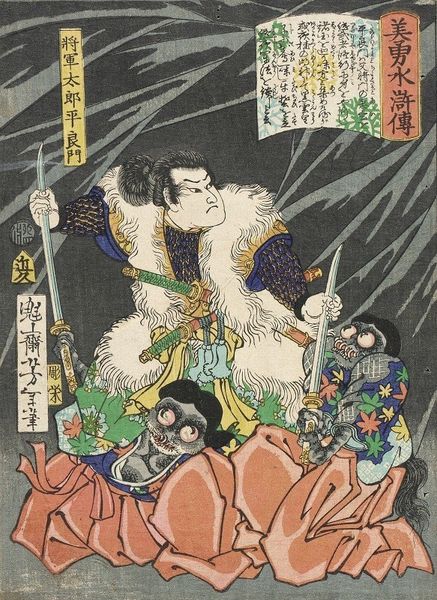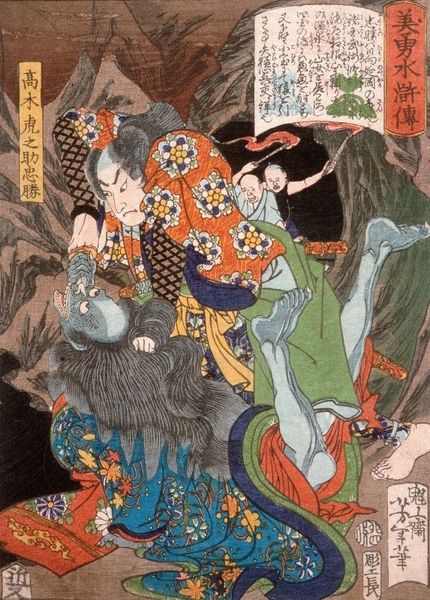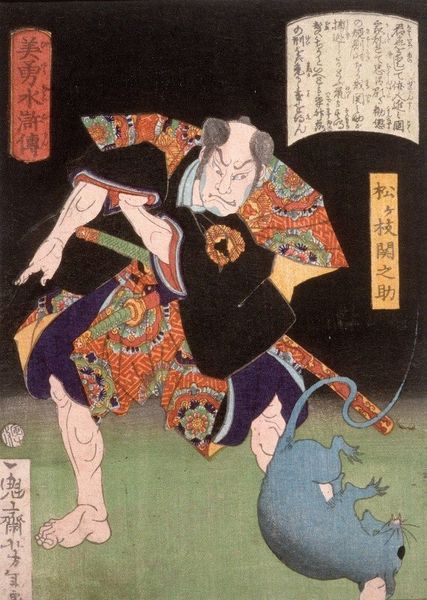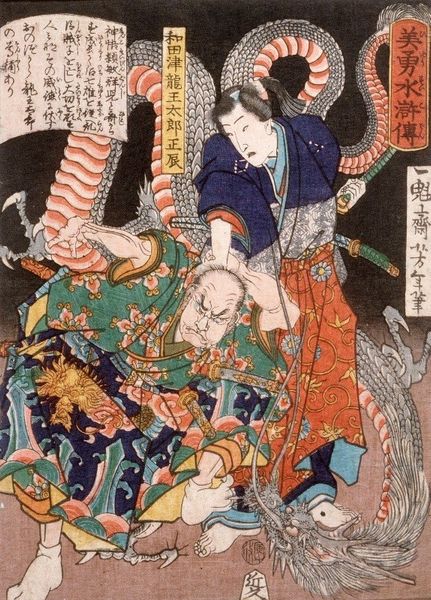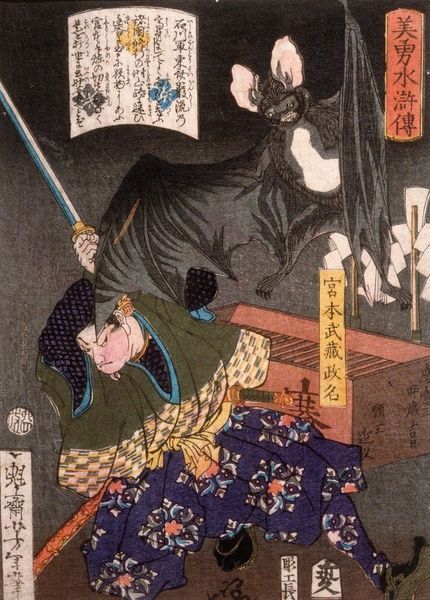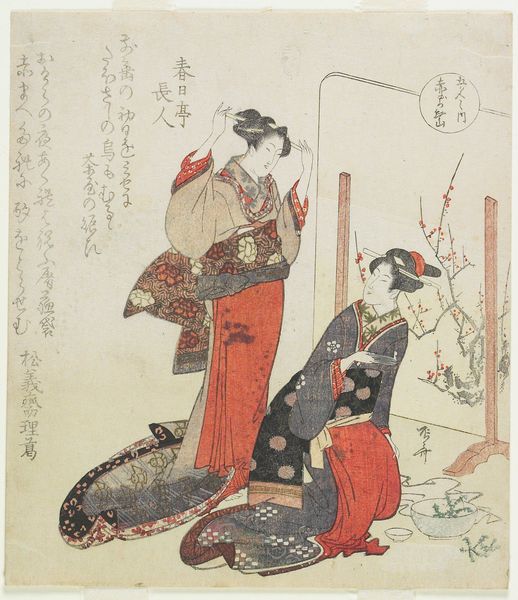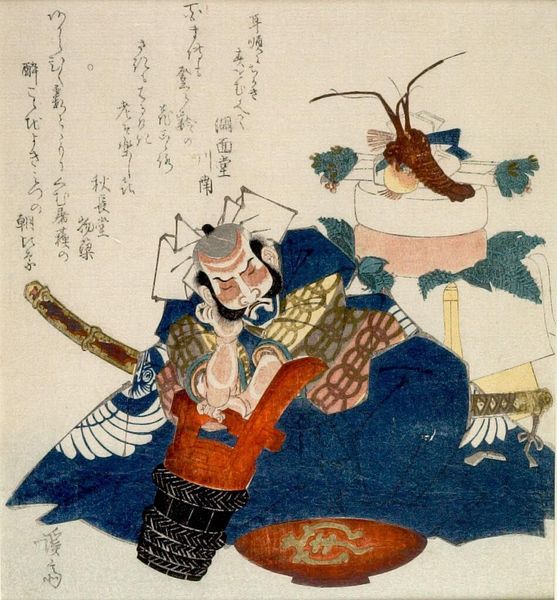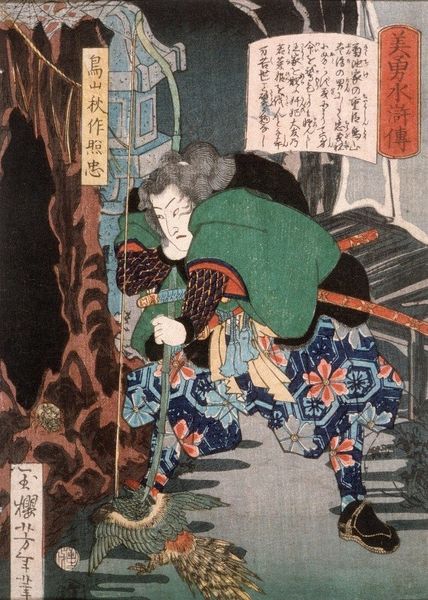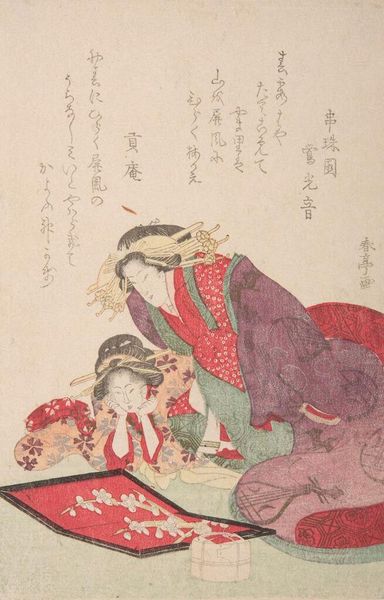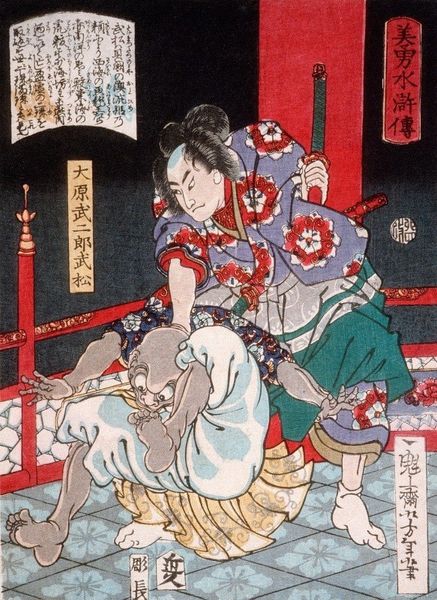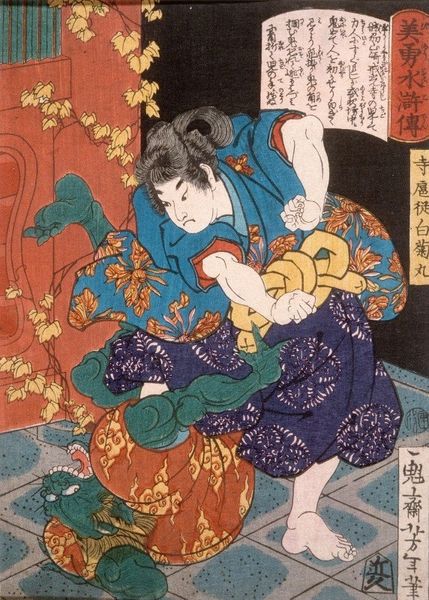
print, woodblock-print
#
portrait
#
narrative-art
# print
#
asian-art
#
ukiyo-e
#
woodblock-print
Copyright: Public Domain: Artvee
Curator: Here we have a woodblock print titled "Jiraiya Riding a Frog," created in 1866 by Tsukioka Yoshitoshi. It depicts a figure riding atop an enormous frog, seemingly unfazed despite his rather unusual mode of transportation. Editor: My initial impression is of a surreal blend of power and absurdity. The main figure exudes an almost indifferent air, which clashes comically with the monumental frog. It really underscores the complexity of the Ukiyo-e tradition! Curator: Indeed. This print belongs to the Ukiyo-e tradition, which often featured Kabuki actors, courtesans, and folklore, making commentary on society and popular culture. But looking beyond face value, one cannot undermine how print-making allowed artworks to become easily shared at an exponential rate. Editor: You're spot-on; it facilitated accessibility in disseminating knowledge and narratives that had direct impact. I read the figure astride this amphibian as Jiraiya, a ninja character from Japanese folklore, drawing strength not from his own power, but rather drawing energy from alliances with animal spirits. What kind of narrative are we engaging in here? Curator: He was known as one of the most gifted pupils to date. As legend dictates, Jiraiya mastered toad magic. This image then serves not just to demonstrate one aspect of toad magic in full effect, but it signifies this individual’s complete domination over the spirit world, nature, and knowledge! It's deeply intertwined with social and political events and upheavals of the day. Editor: I see Yoshitoshi subtly placing Jiraiya into the frame as a symbol for challenging authority. By portraying him with this amphibian power symbol, he’s touching upon something really elemental about resistance! This piece makes us think about cultural stories through different perspectives that echo well beyond 1866. Curator: Ultimately, through print-making's socio-historical circumstances in the Edo period, this work exemplifies both aesthetic pleasure and social commentary and offers much more than simple artistic value in our collection today. Editor: Exactly. We should contemplate how these artistic productions affect power structures or represent shifts that directly affected citizens today!
Comments
No comments
Be the first to comment and join the conversation on the ultimate creative platform.
